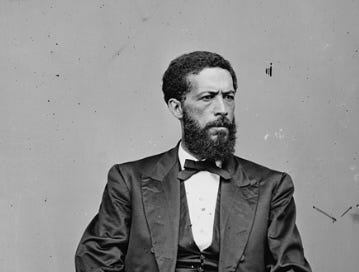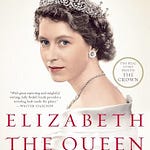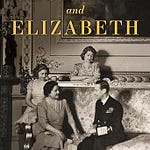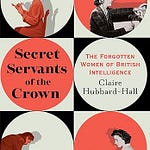John Mercer Langston was born to a mixed-race couple in 1829, a time when interracial relationships were highly taboo and often illegal. His father, Ralph Quarles, was a white plantation owner who held enslaved people, including John's mother, Lucy Langston. Despite the prevailing social norms, Ralph held a progressive view for the time, believing in the education and eventual emancipation of those he enslaved. This philosophy led him to free Lucy in the early 1800s, making it possible for John to be born free, providing John a unique start in life amidst the harsh realities of life for southern black Americans.
While John only had a few years with his parents, as they both passed away when he was four years old, he spoke kindly of them and their relationship. They never married, as the laws forbade doing so. But they had four children together.
After their passing, John spent his youth living in different homes. He experienced much kindness and warmth, with many life lessons coming from the experience. In one home, before even his teen years, he learned the habits of hard work and discipline, which John described as an essential experience that prepared him for life challenges. In that home, the" idea of the highest style of boyhood was realized, when it could be said of one that he was a good worker," John would say.
After attending Oberlin for college and growing into adulthood, John began thinking of a career. He decided to become a lawyer. However, his aspiration was met with resistance as racial prejudice in higher education was rampant, and many law schools refused to admit him solely based on his race.
"Students would not feel at home with him, and he would not feel at home with them," one told him.
Feedback from another was, "I will let you edge your way into my school." To which John replied, "What, Mr. Fowler, do you mean by your words 'Edge your way into the school?'" The response: "Come into the recitation-room; take your seat off and apart from the class; ask no questions; behave yourself quietly; and if after a time no one says anything against, but all seem well inclined toward you, you may move up nearer the class; and so continue to do till you are taken and considered in due time as in full and regular membership." John declined.
Instead, John began coursework in theology at Oberlin after getting advice from previous professors who told him that the studies would be good for his soul and help with legal training. Three years later, John graduated as the first black theological graduate in the U.S.
Described in these years as "a rather slim, handsome and elegant young man," John settled in Oberlin, where he became an important part of the community. He became an accomplished attorney, never afraid of taking on a challenge. In one case, he chose to defend Edmonia Lewis. Edmonia, a Black and Native American woman who would become a famous sculptor, was accused of poisoning two friends during her college years at Oberlin. She was found not guilty with John's defense.
Along with his attorney work, John actively participated in politics, beginning with his election as a town clerk in Oberlin. This marked a significant achievement as one of the first black Americans to hold public office in the U.S. After this role, John became a member of the board of education. These were the beginnings of political work that continued throughout his life. In later years, John was appointed Minister to Haiti. After that, he was elected as a congressman representing Virginia.
When he was not working in politics, John also had a career in education. He was President of Virginia Normal and Collegiate Institute. And later, he became a law professor at Howard University, Dean of the Law School, and Vice President of the university.
John advocated for equal rights in all his work. He challenged norms, creating new opportunities. After a long career, John passed away in 1897.
Sources:
Blodgett, Geoffrey. “John Mercer Langston and the Case of Edmonia Lewis: Oberlin, 1862.” The Journal of Negro History, vol. 53, no. 3, 1968, pp. 201–18. JSTOR, https://doi.org/10.2307/2716216. Accessed 3 Mar. 2023.
Bloomfield, Maxwell. “John Mercer Langston and the Rise of Howard Law School.” Records of the Columbia Historical Society, Washington, D.C., vol. 71/72, 1971, pp. 421–38. JSTOR, http://www.jstor.org/stable/40067784. Accessed 25 Jan. 2023.
"John Mercer Langston." Negro History Bulletin, vol. 5, no. 4, 1942, pp. 93–93. JSTOR, http://www.jstor.org/stable/44246678. Accessed 26 Feb. 2023.
Langston, John Mercer. From the Virginia Plantation to the National Capitol; Or, The First and Only Negro Representative in Congress from the Old Dominion. United States, American Publishing Company, 1894.
Prof. John Langston, Howard University. [Between 1860 and 1875] Photograph. Retrieved from the Library of Congress, <www.loc.gov/item/2017894214/>.













Share this post